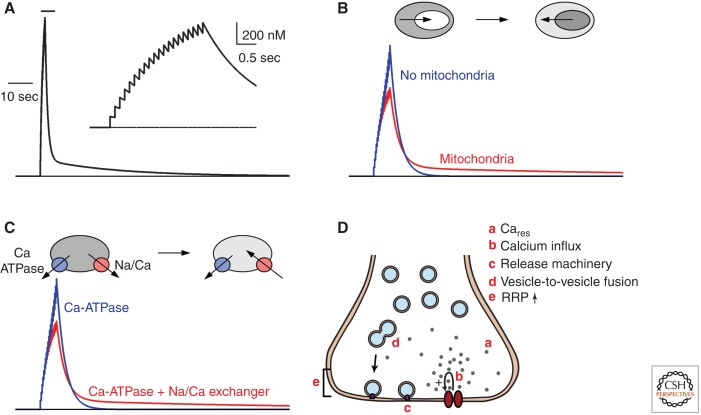Figure 4.
Proposed mechanisms of augmentation and PTP. (A) The Cares evoked by tetanic stimulation. (Inset) The buildup of Cares. After the stimulus Cares decays with a fast and slow component. Two mechanisms have been shown to account for the slow component of Cares decay. (B) One possibility is that calcium loads the mitochondria during tetanic stimulation, and then afterwards calcium leaks out of the mitochondria and thereby leads to a sustained elevation of calcium in the presynaptic bouton. (C) Another possibility is that the interplay of Na/Ca exchanger and the Ca-ATPase leads to sustained calcium increases. During and immediately after tetanic stimulation, calcium is rapidly extruded through both the Na/Ca exchanger and the Ca-ATPase. At some point the Na/Ca exchanger has removed sufficient calcium, and there is a sufficient buildup of sodium in the terminal that it reaches its reversal potential, opposes the Ca-ATPase, and leads to a very slow Cares decay. (D) Schematic showing mechanisms of augmentation and PTP.

